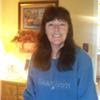What does Authentic Assessment look like? This is a question that I have asked myself several time because there seems to be so many assessments out there. Authentic Assessment includes a task for students to perform and a rubric that evaluates the students performance. There are other names that are used for Authentic Assessment which are Performance Assessment, Alternative Assessment, and Direct Assessment.
How are Authentic Assessment and Traditional Assessment similar and yet different. Both assessments have a belief that the primary mission of schools is to help develop productive citizens, but after this there is a difference. In the Traditional Assessment curriculum drives assessment. The body of knowledge is determined first and that becomes the curriculum that is delivered. In Authentic Assessment the assessment drives the curriculum. The teacher determines what task the students will perform to demonstrate their mastery, and the curriculum is developed to enable students to perform tasks well.
Authentic or Performance Assessment has been gaining acceptance among early childhood and primary grade teachers. There are many benefits to this assessment one being that teachers document what they know and do based on activities the students engage in. The teachers can evaluate students progress from ongoing classroom interaction with materials and their peers. They can also plan a developmental curriculum based on what they know about each student. The teachers carry the responsibility for monitoring what the children are learning and what the teachers are teaching. Assessments are made on a daily basis, using reflective activities in math to make sure the students are building on previous lessons, performance tasks, and problem based learning. They have a full picture of their students and assess not only their answers but the way they communicate the answer, and solve problems. Communication, process, and solution are key in teaching math concepts. In Authentic Assessment it is brought to the forefront that this is a marriage between curriculum and assessment.

No comments:
Post a Comment